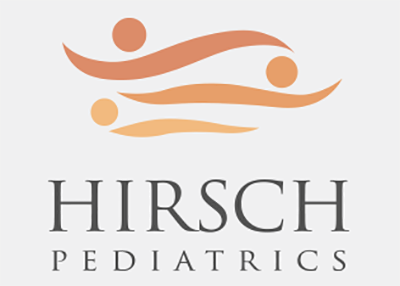Please Note: These guidelines are only for children who are fully vaccinated with no chronic medical illnesses.
These guidelines provide general guidance and should not be used as a substitute for the individual advice provided over the phone or at an appointment. If you have any significant or ongoing concerns, please call the office. Please contact Hirsch Pediatrics or go to the ER if your child is under 2 months old and has a fever (rectal temperature of 100.4 Fahrenheit or 38 Celsius).
These guidelines are written for patients of Hirsch Pediatrics and may not be copied or used without the written permission of Dr. Hirsch.
What is “pink eye” (also known as conjunctivitis)?
- Conjunctivitis is simply the medical term for “pink eye.” The conjunctiva is the outermost surface of the white part of the eye and the inner surface of the eyelid. When the conjunctiva is infected or irritated it will appear pinkish or reddish and is called conjunctivitis or pink eye.
Does my child have pink eye?
- If your child’s eye appears pinkish or reddish then “yes” your child probably has conjunctivitis.
So now I think my child has pink eye. What should I do?
- DO NOT PANIC!
- Fortunately the vast majority of pink eye cases are due to mild viral infections and usually improve on their own in 3-4 days without the need for an appointment or prescription eye drops.
Is “pink eye” contagious and when can my child go back to daycare/school?
- As noted above most cases of pink eye are due to mild viral infections and thus are contagious (similar to any other viral infection such as a cold).
- However unlike colds which can linger for 10-14 days, most pink eye infections tend to improve on their own in 3-4 days.
- Most daycares/schools should allow a child back if the eye drainage is minimal (not recurring throughout the day) and the child overall looks well without fever or fussiness.
When are prescription eye drops for pink eye helpful?
- Prescription anti-bacterial eye drops are helpful for eye injections that are more serious and thus may come from bacteria. Eye infections from bacteria tend to persist for more than 3-4 days or have thick greenish pus that accumulates frequently during the day.
- Also some child care centers require that any child with pink eye (even if it is very mild) take prescription eye drops for 24 hours before returning to daycare.
- Note: This daycare policy has very little medical justification since the vast majority of conjunctivitis cases are due to viral injections and thus do not improve any sooner with anti-bacterial eye drops.
How do I get a prescription for eye drops?
- If you feel your child may benefit from eye drops, please contact Dr. Hirsch during regular business hours and Dr. Hirsch will send a prescription to your pharmacy without an appointment.
- You can also send a message through your patient portal 24/7 and Dr. Hirsch will respond the next morning.
What if I need a prescription for eye drops after-hours?
- Fortunately as noted above there is no medical need for an after-hours or immediate eye drop prescription.
- However if you still feel that your child needs an immediate after-hours prescription for eye drops, then your child should first be seen at an after-hours clinic.
When does my child need an appointment for pink eye?
- Please make an appointment if the eye drainage or redness is not significantly improved (with or without eye drops) after 7 days.
- Also your child should be seen immediately if there is significant swelling and redness around the eye or if your child has any blisters around the eye or cold sores.
What is the prescription eye drop?
- Polytrim eye drops is the most common prescription. The dosage is 1 drop per eye applied 3 times per day for up to 7 days.
- You can stop the eye drops as soon as the eye as improved.
- The dosage is the same for all age children and adults.
- If your child is in daycare/school, the drops can be administered before school/daycare, after school/daycare, and at bedtime.
- Please note Dr. Hirsch always sends in refills so you can access the eye drops in the future for any child without having to call the office.
How can I keep conjunctivitis from spreading in my house?
- To prevent conjunctivitis (or any other infection from spreading), good hygiene – in particular frequent hand washing after touching the eyes – is important as well as disinfecting objects and surfaces that may come into contact with other family members.
- Fortunately even if several family members have the same conjunctivitis infection, it is not possible to get reinfected by the same infection.
My child may have seasonal allergies so is it possible the pink eye is from allergies?
- Yes, “allergic conjunctivitis” can also cause similar symptoms as a viral pink eye infection.
- Eye allergies often come with very itchy eyes and a clear runny nose.
- Typically eye allergies are not seen in infants and do not start until at least age 2-3.
- You can treat allergic conjunctivitis with over the counter Zaditor eye drops. The dosage for children age 3 and older is 1 drop into each eye 2 times per day spaced 8-12 hours apart.
Looking for something else? Click here to view all of Dr. Hirsch’s medical advice topics.

